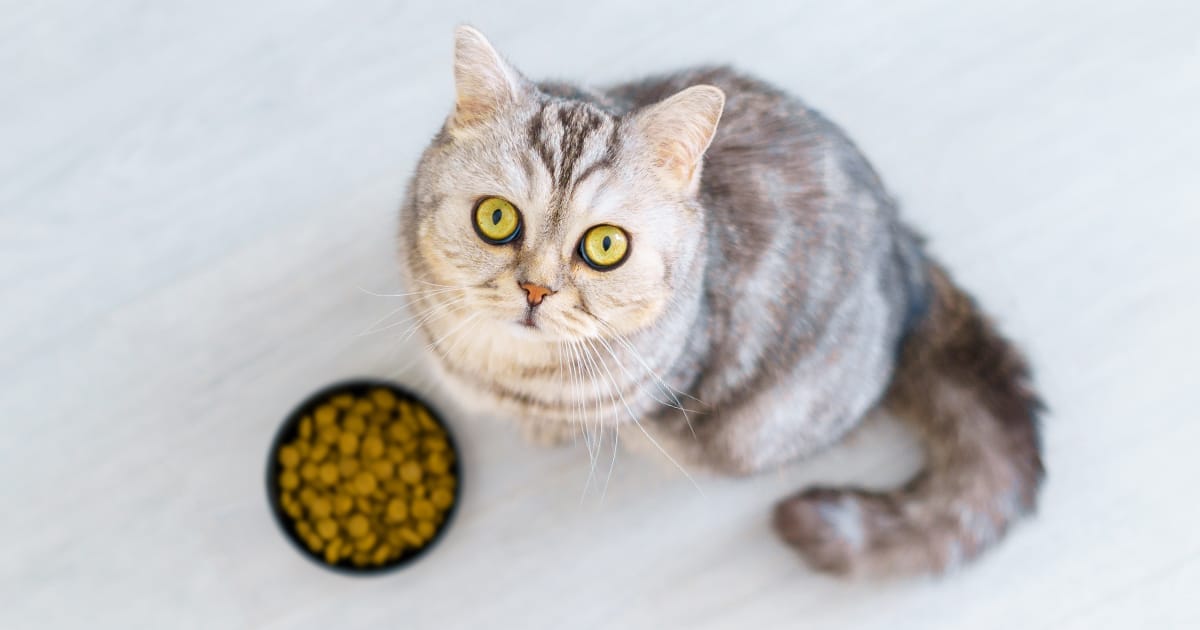Cat Miliary Dermatitis: Causes and Treatment
Cat miliary dermatitis is a skin reaction with small, often red, bumps with surface crust. Learn more and how to help your cat.
Miliary dermatitis in cats is a descriptive term for a common skin lesion found on cats with a primary allergic skin disease. The lesions may cause a cat to itch. In this article, we will review some causes of cat miliary dermatitis, how to spot the lesion, the importance of a veterinarian making a proper diagnosis of the primary disease, and treatment options for the primary diseases causing miliary dermatitis.
What is Cat Miliary Dermatitis?
Cat miliary dermatitis is one of several reaction patterns of cats with allergic skin disease. It is a reaction pattern characterized by the presence of small, often red, bumps with surface crust. The lesions resemble millet seeds, hence the name “miliary.” These bumps are typically found on the head, neck, back, chin, trunk, and base of the tail.
Causes of Feline Miliary Dermatitis
It is very important to recognize that miliary dermatitis is a reaction pattern. It reflects the presence of a primary allergic skin disease or other hypersensitivity reaction. The most common causes of this reaction pattern include:
- Fleas and skin parasites: Flea bite hypersensitivity, cheyletiellosis (walking dandruff), otodectes (ear mite), tromiculosis, cat fur mite, pediculosis, notoedres (mange) are all ectoparasites that can lead to miliary dermatitis as a reaction pattern.
- Cutaneous adverse food reaction (aka food allergy): A cat may become sensitized to certain ingredients, typically meat protein, in a diet. Once sensitized, they may develop symptoms of adverse reactions. Miliary dermatitis is one of these reaction patterns.
- Atopic dermatitis, feline allergic skin syndrome (aka environmental allergies): Cats with atopic dermatitis may present with miliary dermatitis. Atopic dermatitis is the hypersensitivity to allergens from pollen, house dust mites, mold, or other environmental allergens.
Signs of Feline Miliary Dermatitis
Identifying the signs of cat miliary dermatitis is important for early detection and prompt treatment. Common signs include:
- Small, red, crusty bumps on the skin resembling millet seeds
- Intense itching, leading to excessive scratching, licking, or biting of the affected areas
- Hair loss or thinning hair in the affected areas
- Skin inflammation, redness, or swelling
- Restlessness or behavioral changes due to discomfort
Diagnosing Miliary Dermatitis
Your family veterinarian may refer you to a veterinary dermatologist who’s spent years training specifically in the diagnosis and treatment of all diseases of the skin and coat, including the nose, ears, nails, and footbeds. The specialist can diagnose cat miliary dermatitis through a thorough examination and evaluation of the feline’s medical history. Diagnostic tests, such as skin scrapings, allergy testing, or a food trial (elimination diet), may be necessary to identify the underlying cause.
How to Treat a Cat with Miliary Dermatitis
- Flea Control: All cats with miliary dermatitis should be treated for flea and other ectoparasites as the first step. This may resolve the problem. Flea preventative is recommended for 12 months of the year in allergic or sensitive individuals. Your veterinarian will prescribe treatment for all pets in the household. Indoor cats should also be treated as fleas and other ectoparasites may reside indoors and transfer from pet to pet (and humans). A comprehensive flea control program is essential. This includes treating the cat, their environment, and other pets in the household.
- Treatment of the itch: The most common treatment of the itch associated with miliary dermatitis is a short course of glucocorticoid/steroid.
- Treatment of the infection: If cytology shows presence of infection with bacteria, antibiotics would be prescribed. Some cats permit bathing so a medicated shampoo or other formulation may be dispensed and sprays, may be prescribed to alleviate itching, reduce inflammation, and treat secondary infections.
- Identification of the allergy: Diagnostic food trial may be prescribed. If a cat fails a diagnostic food trial and atopic dermatitis is confirmed, then allergy testing and allergen specific immunotherapy may be prescribed.
If you suspect your cat may have miliary dermatitis or other reaction pattern typical of an allergic skin disease, consult with your veterinarian or dermatology specialist like MedVet for a proper diagnosis and the best treatment plan for your furry friend to help them live a happy, itch-free life.
FAQs
Contact MedVet
If you suspect your cat has miliary dermatitis, contact a veterinarian.
Find a MedVetContents
Contact MedVet
If you suspect your cat has miliary dermatitis, contact a veterinarian.
Find a MedVet


